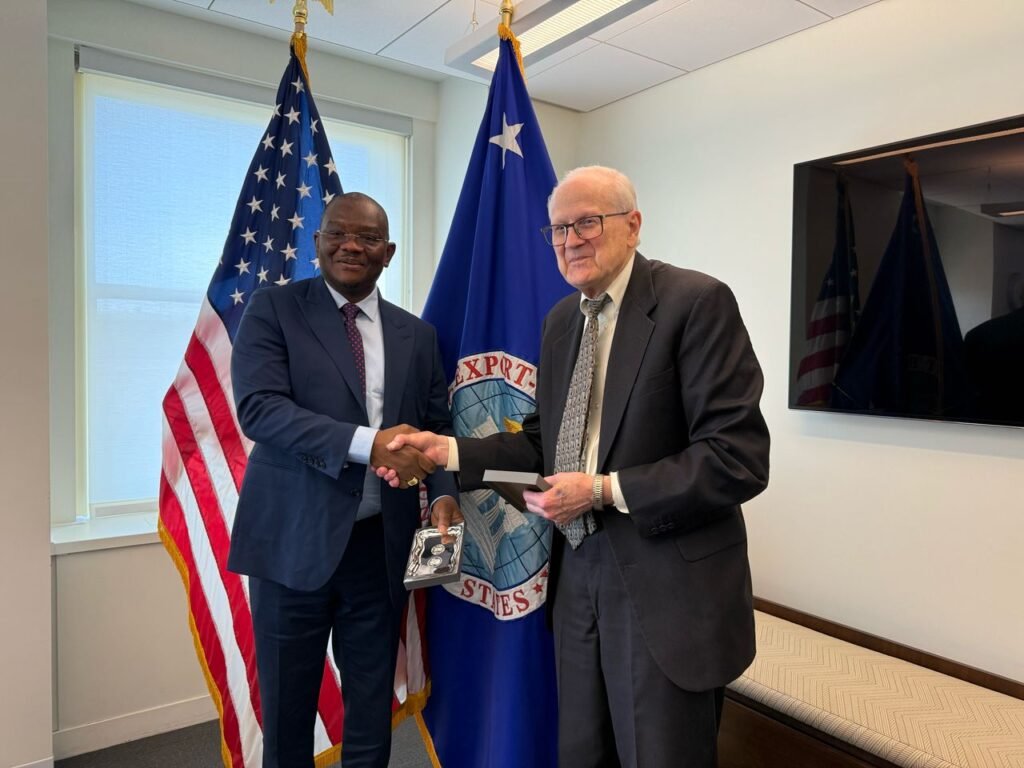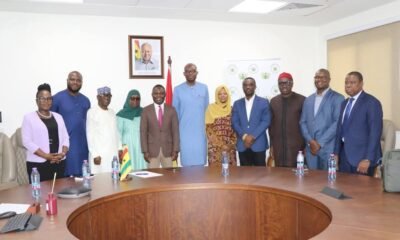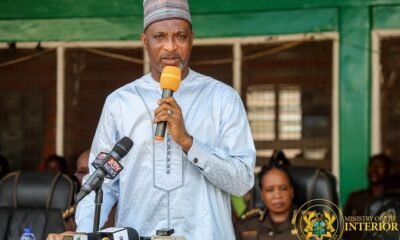Hot!
1Billion Africa launches STEM for Africa Project

1Billion Africa (1BA) recently launched the Science, Technology, Engineering and Mathematics (STEM) for Africa (S4A) project in Hwidiem in the Asutifi South District of the Ahafo Region of Ghana.
The S4A project, which contributes Sustainable Development Goals 4, 5, 10 & 17 – Quality Education, Gender Equality, Reduced Inequalities, and Partnerships for Development, respectively, is a bold initiative
to raise young scientists and innovators from rural communities in Africa.
1Billion Africa, a non-profit civil society organisation in Africa, inspires and empowers Africa’s youth to be change-agents in their communities by finding problems and turning them into projects.
The S4A project in Hwidiem is funded under the Engineering X programme founded in partnership with Royal Academy of Engineering and Lloyd’s Register Foundation.
The Queen Mother, Nana Attaa Adwoa Agyeiwaa Kodie II, shared her commitment and vision of bringing quality education to Hwidiem, and why she believed the S4A project was helping to facilitate the initiative.
She applauded those funding the project and partners, and urged all stakeholders to commit to playing their roles diligently. She also urged parents to be involved, and student beneficiaries to take advantage of this golden opportunity to invest in their future.
“We are piloting this initiative in Hwidiem because of the immense support demonstrated by stakeholders during previous projects by 1BA in the district,” Mr Prince Adu-Appiah, Chief Executive Officer (CEO) and Founder of 1Billion Africa, said.
1Billion Africa and its partners appealed to the government, institutions, companies and individuals, to help scale the project to other communities in Ghana.
For the next two years, the S4A project will capacitate 1,000 student beneficiaries in 10 schools in Hwidiem to go through a total of 52,000 hours of practical STEM tuition using the innovative Science Set toolkit
developed by Dext Technologies Limited.
The project targets school children between the ages of 10 -15 years, who are in upper primary and junior high school in Hwidiem.
A total of 15 STEM clubs would also be set up to further engage the students in other innovative STEM activities, as well as have further practical sessions with the toolkit, which can be used to perform over 30 experiments.
The experiments include; building mini-robots, circuit systems, security alarm systems, and solar panel models.
Creativity, innovation, problem-solving and critical thinking skills to solve community problems is at the heart-beat of S4A, thus two Innovation Challenge competitions will be organised within the
project period.
In addition, 50 girls selected from within the 1,000 beneficiaries will receive mentoring from STEM Champions in liaison with Synergies Institute – Sankofa Mentorship Hub.
1BA has implemented and inspired over 25 projects in three countries – Ghana, Namibia and South Africa – impacting over 12,000 people, the majority being youth, women and children.
Key project partners include; Dext Technology, Synergies Institute – Sankofa Mentorship Hub, Nana Attaa Agyeiwaa II Foundation, D S Dayta Solution, Hwidiem Traditional Council, the Asutifi South District Education, the District and Local Government Assemblies, and Community Leaders.
Hot!
GEXIM deepens relations with US EXIM Bank

A management team of the Ghana Export – Import Bank (GEXIM) led by the Acting Chief Executive, Sylvester Mensah met with the leadership of the Export–Import Bank of the United States (US EXIM) on Wednesday April 23, 2025 in Washington DC, United States of America.
The Acting President and Chairman of US EXIM, Mr. James C. Cruse and Vice President, International Relations, Ms. Isabel Galdiz received the GEXIM delegation, which included Deputy CEO for Banking, Mr. Moses Klu Mensah and Head of International Cooperation, Mr. Jonathan Christopher Koney at the headquarters of US EXIM.

The meeting offered the GEXIM team the opportunity to share the strategic direction of the Bank in line with the resetting agenda of the President of the Republic, His Excellency John Dramani Mahama for the repositioning of the Ghanaian economy into an export-led one by providing the requisite investment to Ghanaian businesses.
Mr. James C. Cruse expressed US EXIM’s eagerness to deepen its existing relations with GEXIM and proposed the signing of a new Cooperative Framework Agreement following the expiration of a Memorandum of Understanding signed in 2019 to utilize US EXIM’s medium term loan guarantees to procure machinery by GEXIM for qualified Ghanaian Small and Medium-sized Enterprises (SMEs).
Mr.Sylvester Mensah thanked the Acting President and Chairman of US EXIM for hosting the GEXIM delegation and reaffirmed the Ghanaian government’s commitment to strengthening trade and investment between Ghana and its global partners for economic transformation of Ghana with GEXIM playing a pivotal role.
The two teams will be meeting on the sidelines of the 2025 US EXIM Annual Conference on 29th and April 30, 2025 to explore possible areas of collaboration and matching Ghanaian businesses to American companies. The meeting ended with an exchange of gifts.
Hot!
Many SOEs have been used as mere instruments for personal wealth accumulation –Pres.Mahama

President John Dramani Mahama has expressed concern over the misuse of State-Owned Enterprises (SOEs) for personal financial gain by individuals in leadership positions.
Speaking during a meeting with Chief Executives of specified entities under the State Interest and Governance Authority (SIGA) on Thursday, March 13, the President directly attributed the dire state of SOEs to their leadership, accusing chief executives, management teams, and governing boards of prioritising personal enrichment over organisational efficiency.
He pointed to bloated budgets, unjustified allowances, and unnecessary expenditures as factors draining public funds while SOEs continue to rely on government bailouts.
“Many SOEs have been used as mere instruments for personal wealth accumulation by appointees. The chief executives, management, and boards of these enterprises are responsible for this situation. Some SOEs have become perennial loss-makers, draining public funds with bloated budgets, unjustified allowances, and unnecessary expenditures while relying on government bailouts as if entitled to them. Many of these entities are at their lowest point in the entire history of the Fourth Republic,” he said.
President Mahama further noted that many SOEs have been plagued by inefficiencies, corruption, and mismanagement, leading to consistent financial losses. He cited the 2023 State Ownership Report by the State Interests and Governance Authority (SIGA), which highlighted systemic inefficiencies and wasteful expenditures within these entities.
He therefore reaffirmed his commitment to reforming under-performing SOEs and ensuring they serve national interests.
He warned that loss-making SOEs will no longer be tolerated and will either be merged, privatised, or closed.
“I will assess you based on your performance. If you do not align with the pace of the reset agenda, you may be asked to step aside. If that adds to the horror movie, so be it,” he added.
Source: Myjoyonline.com







